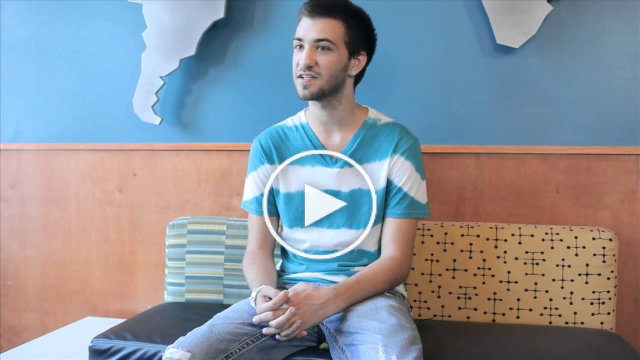Teens Can Survive Suicide
Teens in today’s world are proficient at multi-tasking, yet they can get so discouraged with their world. That makes your outreach program, “Teens Can Survive,” so important.
~ Mary McDermott Cook, President, The Eugene McDermott Foundation
 Suicide and Depression Awareness Training
Suicide and Depression Awareness Training
One of the most important objectives of the Teens Can Survive program is to educate the community on teenage depression and suicide. SCCenter promotes awareness by speaking directly to youth in community organizations such as schools, church youth groups, and other youth organizations. We also work closely with school counselors and other members of community organizations to create effective identification and intervention strategies. Awareness training consists of identifying the warning signals that often occur before a suicide attempt is made as well as the steps to take should a person identify as suicidal.
 Mental Health Check-Up for Teens
Mental Health Check-Up for Teens
In addition to awareness training, the Suicide and Crisis Center also facilitates mental health screening for youth. While education and awareness are important, mental health screening is very successful in identifying the youth who are suffering in silence. The program is unique for it can reach a large amount of youth in a limited amount of time. SCCenter strongly believes that just as youth receive an annual physical check-up, it is important for them to receive a mental health check-up as well. SCCenter offers screening for no charge to community organizations.
How the screening works: SCCenter offers its screening program to organizations and schools in the North Texas area. The screening employs advanced computer technology, sensitive interviewing design and self-reporting techniques to detect dangerous levels of depression among young people, as well as other warning signs that can lead to suicide. We can facilitate the screen through the schools' computer labs, or we are able to set up a station with laptops if the organization or school does not have access to computers. If computers are not an option, then the screen can be administered as a paper and pencil version. The youth completes the screen, which takes only 10 to 15 minutes. If the youth identifies as depressed or is showing signs of suicide ideation, he or she is then interviewed by a mental health professional to determine the level of risk. The youth's family is contacted and referrals for mental health resources are given.
For more information about the Teens Can Survive program, please send an email to TCS@sccenter.org.
Testimonials From Mental Health Professionals | Suicide Stories
I am enthusiastic about the work that you are all doing at the high school. Research has strongly supported the positive impact of screening as a means of reducing teen suicide. We know that the "proof is in the pudding." Thanks to this program and the professionalism of the high school staff, you have changed (and potentially saved) the lives of students. I'd say this is an incredible testament to this program.
~ A North Texas psychologist
I am now a firm believer in the power of being able to identify students who are in need before they become hopeless. We provide their families with information so they can get help for their child. With this tool, we are proactive rather than reactive in serving our students' emotional needs. I am able to follow my identified students throughout the year, working on coping skills and communication. This program saves lives!
~ A high school counselor
Testimonials From High School Students
I thought that it helped me understand some things that are going on in my life.
I thought that this was a good interview, so that if there are people that do need help they can get it before it's too late.
I believe that this interview was very helpful and hopefully whoever is checking this can get me help with my different problems.
I think it is cool that you are interested.
It should be continued.
I thought that it was helpful. It is a good way to maybe save a life.
I thought it was good and can save someone's life.
Read more about the common characteristics of suicide and depression to start understanding the warning signs of suicide, plus the do’s and don’ts—essential steps for averting suicide.
Testimonials
Ribbons of Hope

Maggie's True Story of Help & Hope for Teen Suicide Prevention
Maggie makes a decision to get out of her life-long 'comfort zone of depression' after having thoughts of suicide. She goes to a treatment center that helps her learn how to change, live differently, and reach out to people for help. A 'white ribbon assignment' from her therapist helps her find peace and hope.
Always Tell Someone

Krista's True Story of Help & Hope for Teen Suicide Prevention
Krista got a late night call from a friend when she was in middle school. The friend's talk of disappearing and thinking that people would be better off without her made Krista think her friend might kill herself. She talked to her mother and to the school counselor. Her friend got help, and Krista realizes that " it never, ever hurts to tell an adult -- always tell someone!
Ask The Question

Kurt's True Story of Help & Hope for College Suicide Prevention
At a college party, Kurt and his friends become concerned that another friend is at risk for killing himself...but they are not sure. So they ask the question-have you thought about suicide? Kurt decides that it is important to wake up a social worker and risk the possibility of offending a friend by intervening and referring him to help.
You Can Never Count The Stars

Shania & Sydney's True Story of Help & Hope
Shania becomes depressed and has thoughts of suicide after being bullied and going off her medication. She gets help from her sister, Sydney, her mother, counseling and love and help from her family. Her true story emphasizes that help is available and help works for depression and suicide prevention.
Good Friends Are Essential

Zach's True Story of Help & Hope for College Suicide Prevention
As a college student, Zach was buying a ring for a girlfriend when she broke up with him. This loss, heavy drinking and isolation put him into a depression downward spiral. His thoughts of suicide and depression got better when he stopped drinking, got physically active and realized that good friends are essential.